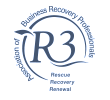Tens of thousands of company directors close a limited company in the UK every year. And whether you want to retire or close a business that is struggling financially, the cost of the process is something you’re bound to consider.
Unlike a sole trader or unincorporated partnership, you can’t just cease trading and shut up shop. You must take steps to remove the limited company from the Companies House register, distribute the profits to the shareholders and deal with any debts.
There are several methods you can use to close a limited company. They cost anything from less than fifty pounds (Strike Off) to several thousand pounds (insolvent liquidation). The most appropriate procedure and the costs will depend on the complexity of your limited company and its financial position.
The main factor in determining the most suitable company closure method is whether the business can pay all its debts.
The exact cost of these procedures depends on the complexity of the company’s affairs, including the number and value of its debts and assets, but we can give you a rough guide.
Strike Off is the cheapest way to close a solvent company, as you can manage the process yourself and do not have to appoint an Insolvency Practitioner. You simply send a paper or digital application to Companies House and pay a fee of less than £50. You can use a third-party service to assist with the process, which may increase the cost to up to £1,000.
Although Strike Off is the cheapest way to close a solvent limited company, it may not be the most cost-effective. That’s because, in Strike Off, only the first £25,000 worth of physical assets or retained profits the shareholders receive are subject to Capital Gains Tax (CGT). Anything over that amount is taxed as income.
That makes it less tax-efficient if your company has valuable physical assets or significant cash in the bank. You also cannot claim Business Asset Disposal Relief to reduce the rate of CGT you pay.
On the face of it, Members’ Voluntary Liquidation is a more expensive way to close a solvent limited company. You must appoint a licensed Insolvency Practitioner to close the business on your behalf, and their professional fees start at around £2,000 + VAT upwards.
They will value and sell the company’s assets, using the proceeds to repay creditors before distributing any surplus funds to the shareholders. The benefit of an MVL over Strike Off is that all the shareholder distributions are subject to Capital Gains Tax (CGT) rather than Income Tax. Overall, that makes it more cost-effective for companies with assets worth over £25,000.
In an MVL, you may also be eligible to claim Business Asset Disposal Relief on the proceeds. That reduces the CGT rate on qualifying assets to just 14%.
You have two main options if your company cannot pay its debts in full. You can either liquidate it voluntarily via a Creditors’ Voluntary Liquidation or wait to be forced into Compulsory Liquidation by a creditor.
In a Creditors’ Voluntary Liquidation, you must appoint an Insolvency Practitioner to close the company on your behalf. Their professional fees start at around £4,000 + VAT for a simple company with relatively few assets and debts.
Acting as the liquidator, the Insolvency Practitioner will value and sell the company’s assets and invite claims from its debtors (parties it owes money to) before paying them in a strict order. The liquidator will write off any debts the company cannot pay.
A benefit of a CVL is that the cost of the procedure is usually covered by the money raised from the sale of assets. As a director, that means you may not have to use your personal funds. You may also be eligible to claim director redundancy pay, with average payouts in the UK reaching around £10,000.
A creditor, commonly HMRC, will initiate Compulsory Liquidation if it believes closing the company down is the best way to recover a debt or protect its interests. However, it can also be an option if the shareholders do not agree to a Creditors’ Voluntary Liquidation.
It currently costs £2,600 to submit the court application, known as a Winding Up Petition, and £280 for the court hearing. There will also be liquidator’s fees of a minimum of £2,000 plus VAT to oversee the sale of assets and distribute the proceeds to the creditors.
As part of the Compulsory Liquidation procedure, the liquidator will conduct a thorough investigation into the directors’ actions and the reasons for the company’s failure. That can lead to adverse consequences, including personal liability for company debt and director disqualification. That, along with the cost of the process, means it’s usually preferable to close an insolvent company voluntarily via a CVL.
Although the costs of liquidating your company can seem daunting, you may not have to use personally held funds or savings. Usually, the money raised from the sale of assets is more than sufficient to cover the costs.
In an insolvent liquidation, the liquidator’s fees and expenses are paid before any of the creditors. If your company does not have sufficient assets to cover the costs, you may be able to use a director redundancy payment. If you are not eligible for redundancy pay, you may be able to arrange an instalment plan with the liquidator, or you can explore personal finance options.
If you are worried about the cost of closing your limited company or would like to discuss the most suitable closure method for your business, we can help. Please get in touch for a free consultation and quote or arrange a meeting at one of our 100+ offices throughout the UK.
By completing the test, you will receive:
If you are considering liquidation for your company, taking expert advice at an early stage is crucial. At UK Liquidators, our team of licensed insolvency practitioners are committed to providing limited company directors with the help and advice they need to make an informed decision.




Looking for immediate support?
Complete the below to get in touch